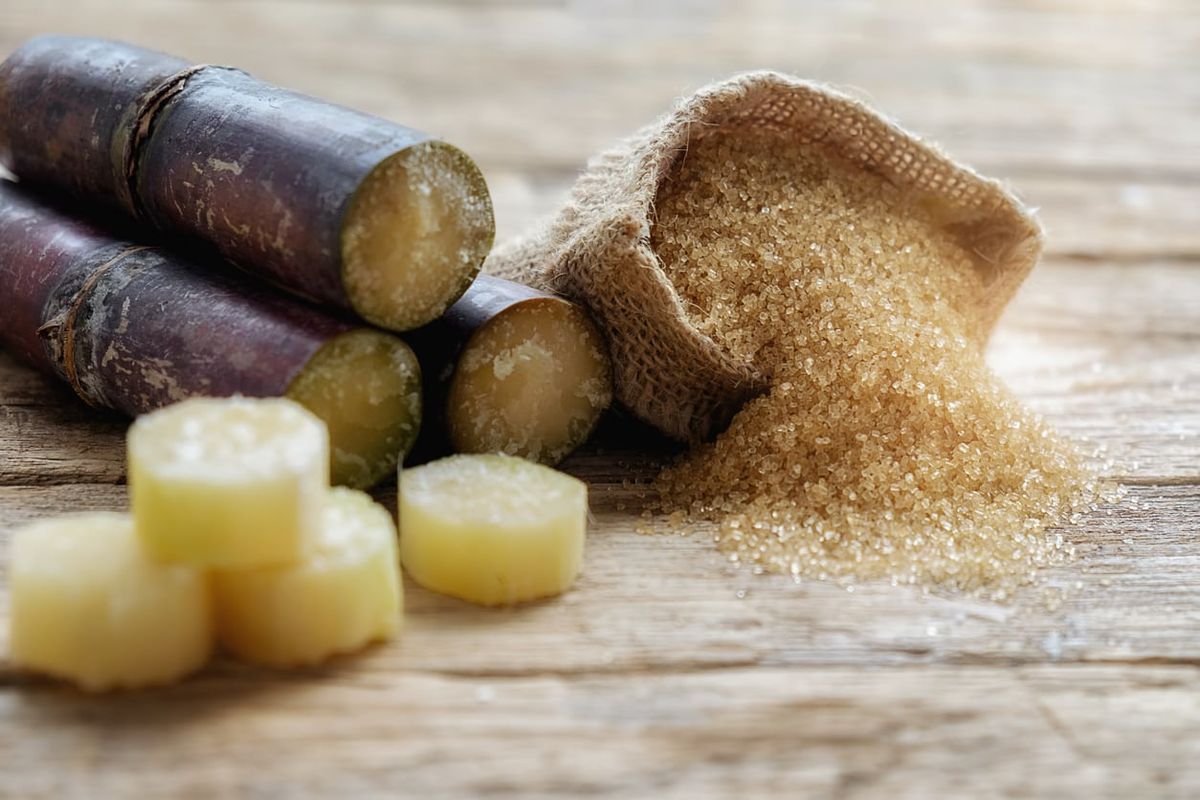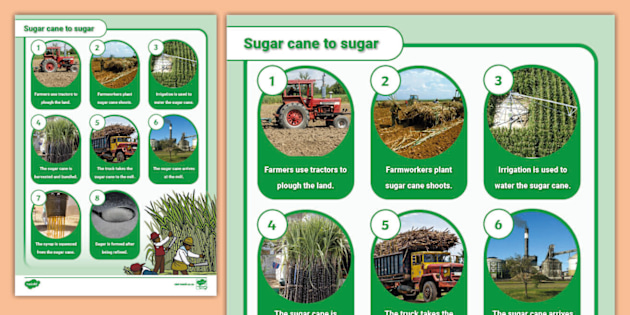Everything About Sugar Canes: What Are Sugar Canes Used For and Their Duty in International Agriculture?
Sugar canes function as a foundation of global farming, largely identified for their function in sugar production. They additionally add to the creation of by-products like molasses and ethanol. These facets not just sustain numerous markets yet also influence economic security in rural regions. However, the growing of sugar walking sticks faces substantial ecological challenges. Recognizing their diverse duty triggers more expedition into their agricultural methods and sustainability initiatives.
The Agricultural Refine of Sugar Walking Cane Cultivation
Although sugar walking stick farming may vary by region, the basic agricultural procedure remains constant. The initial step entails selecting high-yielding ranges appropriate for neighborhood climates. Preparation of the soil is important, commonly calling for tillage and the addition of fertilizers to boost fertility. Planting commonly occurs throughout the stormy period, with farmers using either whole stalks or cuttings to establish new crops.As the plants expand, they need attentive treatment, including weed control, parasite administration, and irrigation, relying on the ecological problems. Farmers monitor the sugar walking stick's development cycle, which normally extends 10 to 24 months, prior to gathering. Gathering is labor-intensive, usually performed manually or with specialized equipment, making certain marginal damage to the stalks. Following harvest, the walking cane is transferred to processing centers. This thorough farming procedure not only supports neighborhood economic situations but likewise plays a considerable function in global farming techniques, contributing to food and power supplies.
Sugar Manufacturing: From Walking Stick to Crystal
The trip of sugar production begins the minute fresh harvested sugar walking stick comes to processing facilities. The initial step entails cutting the cane and cleaning to prepare it for removal. Utilizing high-pressure rollers, the juice is extracted from the smashed walking stick, resulting in a sweet fluid referred to as sugarcane juice. This juice undergoes information, where impurities are gotten rid of via the enhancement of lime and heat.Next, the cleared up juice is concentrated by steaming it down to create a thick syrup. This syrup is after that taken shape by cooling, allowing sugar crystals to form. The taken shape sugar is separated from the remaining syrup, called molasses, via centrifugation.Finally, the sugar crystals are cleaned and dried out, leading to the familiar granulated sugar (What Are Sugar Canes Used For). This procedure transforms raw sugar cane right into an item that is important to various cooking and industrial applications, highlighting the relevance of sugar in global agriculture
Biofuels and Sugar Canes: A Lasting Future
As the globe increasingly seeks sustainable energy options, sugar walking canes have actually emerged as an encouraging resource for biofuels. The biomass originated from sugar canes can be transformed into ethanol, a sustainable gas alternative that significantly lowers greenhouse gas discharges contrasted to fossil fuels. This process not just provides a cleaner power source but also promotes power freedom for numerous countries.In enhancement, sugar walking cane farming supports country economies by creating tasks in both farming and biofuel production markets. Using sugar walking canes for biofuel manufacturing also urges farming diversification, which can enhance dirt health and lower reliance on solitary crops. The by-products of sugar walking cane processing can be utilized for electrical energy generation, furthermore adding to a lasting power cycle. As nations venture to satisfy sustainable energy targets, sugar canes are poised to play a crucial duty in forming an extra sustainable future in the biofuel landscape.

The Duty of Sugar Canes in Beverage Manufacturing
Sugar walking canes play a considerable function in beverage production, working as a primary ingredient in rum and adding to the sweet taste of several soft drinks. Additionally, their all-natural juices are made use of in various beverages, enhancing flavor and allure. This versatility emphasizes the relevance of sugar walking sticks in the worldwide beverage industry.
Sugar Walking Cane in Rum
Rum manufacturing is elaborately linked to the farming of sugar walking stick, a crucial plant that provides the needed fermentable sugars required for fermentation. This procedure begins with the extraction of juice from harvested sugar walking sticks, which is then either fermented directly or refined into molasses. Yeast is included to convert the sugars into alcohol, causing a diverse array of rum styles, from light to dark selections. The geographical region where the sugar cane is expanded considerably influences the taste profile of the rum, with aspects such as soil kind and environment playing important roles. Nations like Barbados, Jamaica, and Cuba are renowned for their rum production, mirroring the social and historic value of sugar cane within the international beverage market.
Soft Drinks Sugar Source

All-natural Juice Manufacturing Makes Use Of
Along with its substantial duty in soda production, sugar walking stick is also pivotal in the all-natural juice sector. The juice drawn out from sugar walking stick, known as walking cane juice, is celebrated for its all-natural sweet taste and special flavor profile. This juice is generally consumed fresh in various regions, specifically in exotic nations, where it is appreciated as a renewing beverage. Furthermore, cane juice acts as a base ingredient in an array of all-natural fruit juices and smoothies, improving both taste and dietary value. Its natural residential or commercial properties make it an attractive option to man-made sweeteners, interesting health-conscious consumers. Overall, sugar walking cane's versatility in juice production underscores its relevance in contemporary drink offerings worldwide.
Advancements in Sugar Cane Byproducts
Technologies in sugar walking stick results are leading the way for lasting services in different sectors. Biofuels stemmed from sugar cane provide a different energy resource, while innovations in sustainable product packaging link are reducing reliance on typical products. These growths highlight the versatility and capacity of sugar walking cane beyond its main usage in drink production.
Biofuels From Sugar Walking Stick
Exactly how can the byproducts of sugar walking cane contribute to lasting power solutions? The conversion of sugar walking stick right into biofuels offers a promising opportunity for renewable resource. By utilizing the fibrous residue, called bagasse, manufacturers can generate bioethanol with fermentation procedures. This bioethanol can function as a sustainable option to nonrenewable fuel sources, decreasing greenhouse gas exhausts and dependence on non-renewable sources. Additionally, molasses, another byproduct, can be fermented to create biofuels, making the most of resource performance. The energy created from sugar walking stick not just offers a cleaner fuel source but likewise improves the overall financial stability of sugar production. By incorporating biofuel manufacturing right into their procedures, sugar cane sectors can play a crucial role ahead of time sustainable power remedies worldwide.
Lasting Packaging Solutions
Sustainable packaging services are significantly being developed from sugar cane results, showcasing the versatility of this agricultural staple. Technologies such as naturally degradable plastics stemmed from bagasse, the coarse residue left after juice extraction, are getting traction. These materials offer a green option to standard plastics, lowering dependence on fossil fuels and reducing carbon impacts. Additionally, sugar cane-based product packaging is compostable, damaging down normally without hurting the environment. Business are now checking out these options to align with consumer demand for sustainability. As understanding of plastic contamination grows, the adoption of sugar cane-derived packaging is expected to climb, positioning sugar canes as a principal in the change to greener packaging services in numerous sectors.
Economic Impact of Sugar Walking Stick Farming

Although sugar cane farming has deep roots in several economic climates, its economic impact prolongs far past farming production. This crop works as a substantial source of income for countless farmers worldwide, specifically in developing nations where farming is a key livelihood. Sugar cane contributes to neighborhood economic situations via job development in harvesting, farming, and handling. The industry likewise promotes development in associated sectors such as transportation, equipment manufacturing, and food processing.Furthermore, sugar cane is a principal in worldwide trade, influencing international markets and prices. Nations that produce sugar cane typically depend on exports to improve their economic stability. The by-products of sugar walking cane, such as ethanol and molasses, expand earnings streams for farmers and include worth to the farming market. On the whole, the financial ramifications of sugar walking stick farming are extensive, affecting not only farmers however likewise whole neighborhoods and national economic climates.
Environmental Factors To Consider in Sugar Walking Cane Farming
While sugar walking stick farming plays an essential role in several economic situations, it also elevates considerable ecological worries that can not be neglected. The comprehensive use plant foods and chemicals in sugar cane cultivation typically leads to soil degradation and water air pollution. Drainage from these chemicals can pollute nearby water bodies, damaging aquatic ecosystems. Furthermore, the monoculture techniques prevalent in sugar walking stick farming reduce biodiversity, making environments extra susceptible to bugs and diseases.Deforestation is one more important concern, as land is typically gotten rid of to give way for sugar haciendas, leading to habitat loss for wild animals and increased carbon discharges. In addition, the high water intake required for sugar walking cane irrigation can strain regional water sources, especially in deserts. As international demand for sugar remains to climb, dealing with these ecological difficulties comes to be vital to assure sustainable methods in sugar cane cultivation.
Frequently Asked Concerns
What Are the Nutritional Perks of Sugar Walking Cane?
The nutritional benefits of sugar walking stick mostly include its high carb web content, providing power. Additionally, it includes vitamins, minerals, and antioxidants that may support overall health, though moderation is vital because of its sugar web content.
Just How Does Sugar Walking Cane Affect Citizen Ecosystems?
Sugar walking cane farming can greatly influence neighborhood ecological communities by modifying land usage, impacting biodiversity, and needing considerable water resources. Additionally, it might cause soil degradation and chemical overflow, disrupting surrounding habitats and wild animals populations.
What Is the Background of Sugar Walking Cane Growing?

Are There Alternatives to Sugar Walking Cane for Sugar Manufacturing?
Alternatives to sugar cane for sugar manufacturing include sugar beetroots, corn, and different exotic plants like sorghum and agave (What Are Sugar Canes Used For). These crops use diverse sources of sweetness, each with distinctive cultivation requirements and environmental impacts
Just How Do Weather Condition Patterns Impact Sugar Walking Cane Returns?
Climate patterns significantly affect sugar cane yields via temperature variations, rains amounts, and seasonal cycles. Drought or extreme rains can prevent development, while excellent conditions improve photosynthesis, eventually influencing the amount and quality of the harvest. The trip of sugar manufacturing begins the minute freshly gathered sugar walking cane arrives at refining centers. The taken shape Full Report sugar is separated from the continuing to be syrup, known as molasses, with centrifugation.Finally, the sugar crystals are washed and dried, resulting in the acquainted granulated sugar. Rum manufacturing is intricately linked to the cultivation of sugar walking cane, a necessary crop that supplies the necessary fermentable sugars needed for fermentation. In addition, the monoculture methods widespread in sugar cane farming decrease biodiversity, making ecosystems much more prone to parasites and diseases.Deforestation is an additional crucial problem, as land is frequently removed to make method for sugar haciendas, leading to environment loss for wild animals and increased carbon emissions. Alternatives to sugar walking cane for sugar manufacturing consist of sugar beetroots, corn, and various exotic plants like sorghum and agave.
Comments on “Unlocking the Mystery: What Are Sugar Canes Used For in Everyday Life”